HMS Victory model is almost finished - 50 years after being started
and live on Freeview channel 276
Michael Byard first began work on the five feet long replica of Nelson's flagship in 1969.
But after two years he was forced to put the ‘labour of love’ aside as he concentrated on his career and raising a family.
Advertisement
Hide AdAdvertisement
Hide AdAfter it languished in his garage for almost four decades the pensioner finally decided to pick up his tools once again six years ago when he was 74.
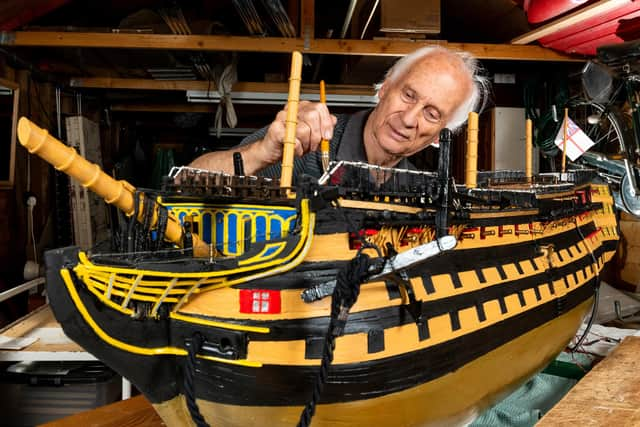

But because of the arthritis in his thumbs he was then only able to work on it during summer months.
Now Michael is finally on the verge of completing the replica - which consists of over 3,000 pieces, the vast majority of which he cut himself.
HMS Victory, launched in 1765, achieved lasting fame as the flagship of Vice-Admiral Nelson in Britain’s greatest naval victory in the Battle of Trafalgar in 1805, and now has pride of place in Portsmouth Historic Dockyard.
Advertisement
Hide AdAdvertisement
Hide AdMichael’s model, which features gun ports, life boats and cannons, is 4ft 11in long, 14in wide and 16in tall.
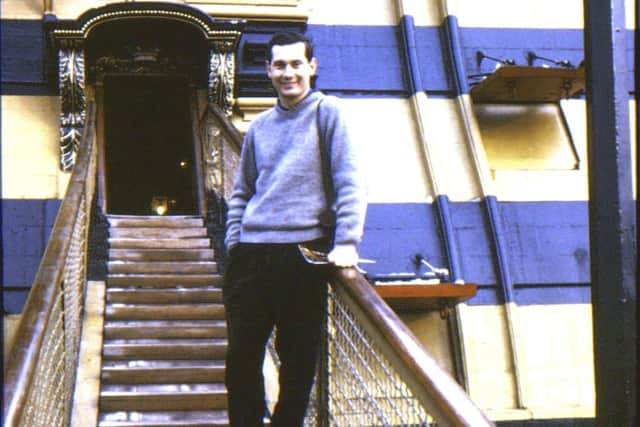

Wearing his reading glasses - sometimes even a visor with magnified glasses - he would use tweezers to fit together the most intricate parts.
The model is made with over 300 tiny wooden planks - all hand carved to size - which make up the floor and body of the ship.
Father of two Michael - who estimates he has spent 600 hours working on the model - cut each plank to measure a quarter of an inch to an eighth of an inch before gluing them together with special wood glue.
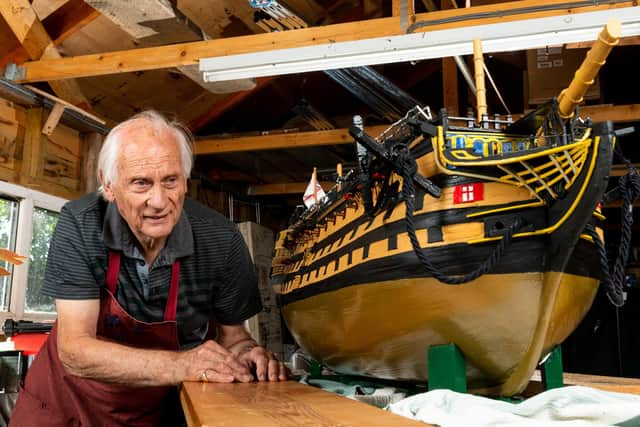

Advertisement
Hide AdAdvertisement
Hide AdBut arthritis in his thumbs has made it difficult to work constantly on the model, with Michael deciding to stick to building the ship in the summer months for up to five hours a day.
The former naval reserve and shipping company worker, who lives with his wife Anne, 65, in Abingdon, Oxfordshire, said: ‘I’ve had to stop working sometimes because the arthritis gets too bad. Other times, it seemed to ease the pain with use.
‘Over winter I wouldn’t touch the model at all, it was under a cloth in the garage in my workshop and I'd leave it until the next year. It was too cold because the garage isn’t heated. Cold weather doesn’t help with the arthritis very much.’
The HMS Victory model includes 104 brass cannons on the upper deck, which Michael bought from a specialist model maker in Devon.
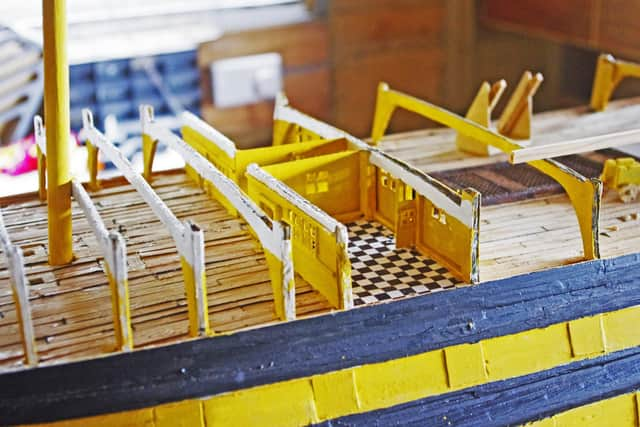

Advertisement
Hide AdAdvertisement
Hide AdFor each cannon, he hand-made carriages out of wooden planks to hold them – even cutting small steps either side and making the wheels out of doweling – with each one taking about half an hour to make.
‘It was very fiddly,’ he said. ‘I was learning as I was going along. There were thousands of pieces, I've never kept a record of how many. There were more planks than anything else.
‘There were times when it was frustrating but I enjoyed what I was doing and I had an end goal in sight - it was just a question of working on it.’
Michael made intricate ladders by hand out of one millimetre plywood - and would spend hours cutting and fixing the wood.
Advertisement
Hide AdAdvertisement
Hide Ad‘HMS Victory has so much history and really she's the only surviving ship of the Napoleonic era in the Royal Navy so she's very special,’ he said.
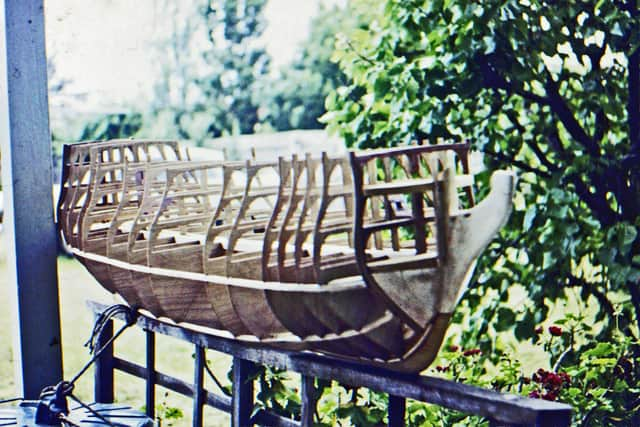

Michael began building the model in 1969 when he was working at a shipping company in Melbourne, Australia, where he had emigrated as a child.
But he packed it away 18 months later before moving back to England with his wife Anne. He had been able to complete the hull up to the Gun Deck level.
Advertisement
Hide AdAdvertisement
Hide AdMichael, who joined the Royal Australian Naval Reserve as an Ordinary Seaman in 1958, based his model on a book called 'HMS Victory, Building Restoration and Repair' which included detailed drawings of the 1797 refurbishment of the Victory in 1:48 scale plans.
He built his ship using the plans at the same size and scale, and began to build it from scratch by cutting out the frames.
Speaking about his 51-year journey of building the model, he said: "It's been a labour of love. I hung it up in my garage for over 45 years what with working in London and children coming along.
‘And when I was 74 I decided that I better do something about trying to fix it. So for the last six years that's what I've been working on. I've enjoyed every minute of it.’
Advertisement
Hide AdAdvertisement
Hide AdHis daughter Anni, an archaeologist, gave her father a small toy cannon from the 18th century to put on his ship.
She said: ‘It's from around 1750 to 1850 so it’s bang on the era that he’s reconstructed the Victory for. It’s a really lovely thing to give Dad something of that period to put on his model. It's a nice touch really.’
The 41-year-old, from Oxford, said she remembered the hull of the ship being left in their family garage for years.
‘One of my longest memories is that the hull of the ship just hung in the garage for years and as kids we would play in the garage and it was always there,’ she said.
Advertisement
Hide AdAdvertisement
Hide Ad‘And then to see him finally get it down and start working it and to see him putting it together is heartwarming.
‘He would sit there concentrating intensely with his magnifying glass and tweezers in his hand to try and put tiny pins into things,’ she added. ‘When he got the anchors up, he was like a little boy just smiling, grinning from ear to ear.
‘Every time I'd go and see him, he'd say “Come and look at my model”. His dedication and patience is incredible and the joy he's got out of it, I'm so proud of him. It's been lovely to see it evolve.’